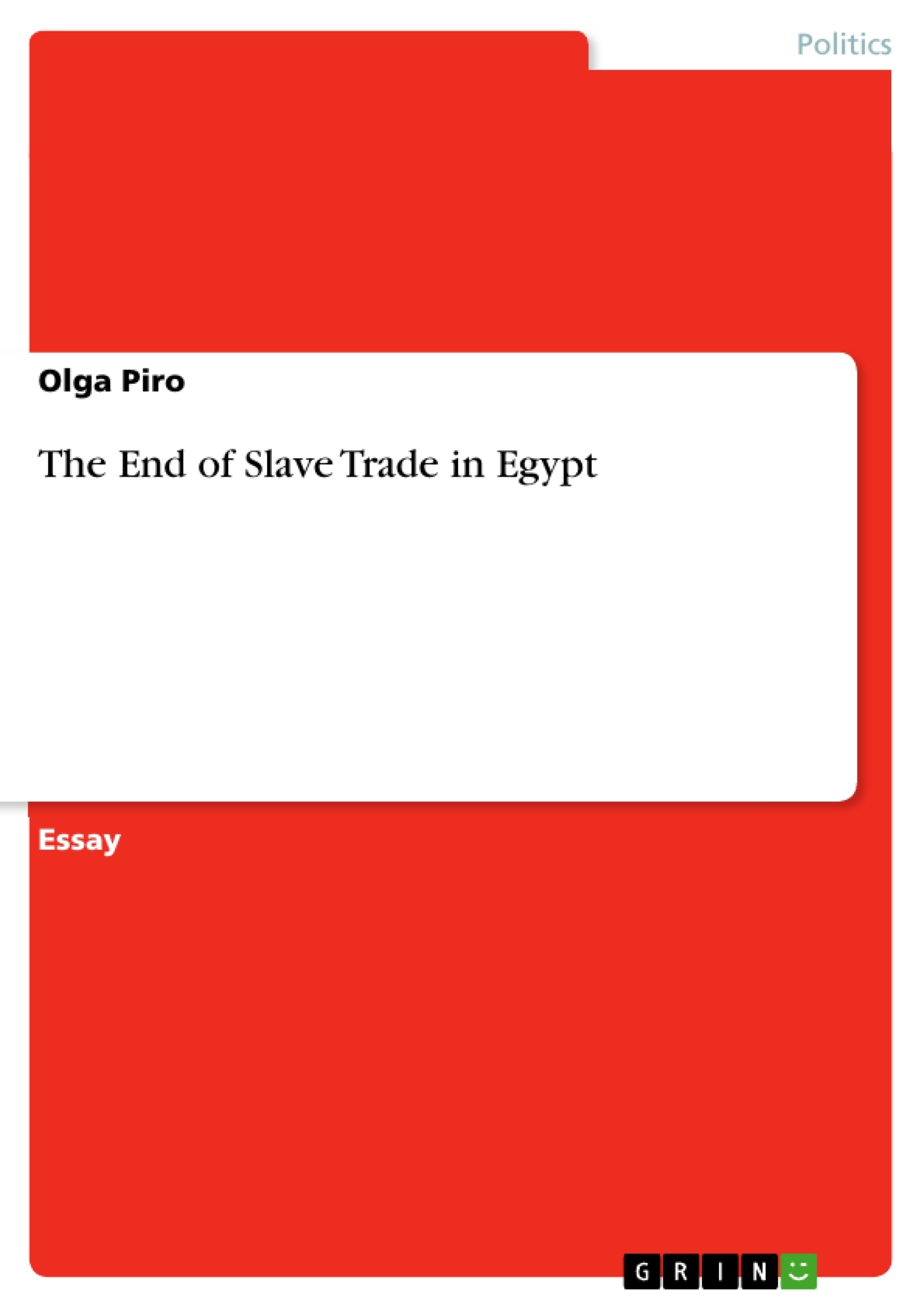This paper discusses the slave trade boom in Egypt and Sudan at the middle of the XIX. century and its following abolition by the Egyptian government in 1873. Several legal attempts of abolishing Egyptian slavery were made along the XIX century, before the period of the Veiled Occupation (1882).
The paper reflects over the legal attempts to abolish slave trade and its effect on Sudanese society.
Can somebody argue that the abolition of slavery in Egypt was due also to the higher risk of buying a slave, if compared to the low working wages?
Frequently asked questions
What is the main topic of the language preview?
The language preview discusses slavery in 19th-century Egypt and Sudan, exploring its economic and social context, as well as the factors contributing to its eventual decline.
What was the "Forty Days Route"?
The "Forty Days Route" (Darb el Arbain) was a major trade route through which slaves were transported from El Fasher to Asyut in Egypt.
What role did cotton production play in slavery in Egypt?
The increasing demand for cotton in Egypt, particularly due to the American Civil War, led to a greater need for labor. Initially, this demand was met partly by slave labor, but eventually, the growth of the free workforce made slave labor less economically viable.
How did the Mahdist revolution affect slavery?
The Mahdist revolution in Sudan (1881-1898) disrupted the slave trade, specifically interrupting the "Forty Days Route." This disruption contributed to the decline of slavery in Egypt by hindering the supply of new slaves.
What were the price ranges for slaves in 19th-century Cairo?
The document provides a table with the price of black male slaves in Cairo varying based on the year:
- 1800: 185-340 piastres
- 1813: 230-280 piastres
- 1837: 800-900 piastres
- 1840: 636 piastres
- 1845: 848 piastres
- 1850: 1038 piastres
- 1877: 1000-2000 piastres
Why was there an increase in population in Egypt during the 19th century?
The increase in population in Egypt was due to factors such as higher food availability, regime stability, and a lower mortality rate compared to previous years. The rise in nutrition and life standards led to an increase in birthrate.
What was the role of Arabic Gum in the Sudanese economy?
Arabic Gum was the most important product in the Sudanese economy. Its production and export were boosted by the Turkish administration and later by the Ottoman government.
What factors contributed to the decline of slavery in Egypt?
Several factors contributed to the decline of slavery:
- The British Empire's and Egyptian governors' preference for a Western development model with salaried workers.
- The Mahdist revolution disrupting slave trade routes.
- The decreasing cost of free labor due to population growth.
- The increasing cost of slaves compared to free workers.
How did the British influence the abolition of slavery in Egypt and Sudan?
The British Empire exerted political pressure for the abolition of slavery in Egypt and Sudan, viewing it as an uncivilized practice. However, the enforcement of abolition was not always consistently implemented.
What was the situation of slavery in Sudan compared to Egypt?
Slavery was more deeply ingrained in the Sudanese economy and society. Darfur, which resisted British and Egyptian influence for longer, relied heavily on slave trade. Even after British rule was established, slavery persisted in some areas outside of direct Anglo-Egyptian control.
What was the "Turkiyya"?
The "Turkiyya" refers to the period of Ottoman-Egyptian rule in Sudan when centralized cultivation was established and taxed to finance Egyptian transformation.
What were the effects of Egypt's integration with world trade in the 19th century?
Egypt experienced a significant increase in trade volume, with exports and imports increasing. Cotton became a major export, particularly during the American Civil War. This integration also led to dependence on foreign capital and eventual indebtedness.
- Citation du texte
- Olga Piro (Auteur), 2016, The End of Slave Trade in Egypt, Munich, GRIN Verlag, https://www.grin.com/document/387743




